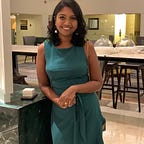Necessary for Some, Good for All
I grabbed this phrase ‘Necessary for Some, Good for All’ from a thought provoking session done by an UX expert at my workplace. The compassion in that phrase influenced me to further read on it, exploring on the relationship between this phrase and technology, which was highlighted very nicely by the above mentioned UX expert.
Reading a little bit on it made me realized that, there is a huge research extent intertwined with this topic. The umbrella term used for these technologies is ‘Assistive Technologies’. Following is a definition I found for this term.
Assistive technology (AT) is any item, piece of equipment, software program, or product that is used to increase, maintain, or improve the functional capabilities of persons with disabilities.
Assistive Technologies can vary from low tech communication boards made of cardboard to high-tech special purpose computers, from hardware such as pointing devices to software such as screen readers.
Me being a developer, something grasped my attention was Web Content Accessibility, to which I also can contribute.
Web accessibility means that people with disabilities can use the Web. More specifically, Web accessibility means that people with disabilities can perceive, understand, navigate, and interact with the Web, and that they can contribute to the Web.
Web being the most widely used information source in many aspects of life, making it more accessible for all, ensures the equal access and equal opportunity to people with disabilities. When we try to make our web applications more accessible for people with special needs, it also supports majority of the society in different ways. For example, a key principle of Web accessibility is designing Web sites and software that are flexible to meet different user needs, preferences, and situations. This flexibility also benefits people without disabilities in certain situations, such as people using a slow Internet connection, people with “temporary disabilities” such as a broken arm, and people with changing abilities due to aging.
Web Content Accessibility Guidelines (WCAG) published by the Web Accessibility Initiative (WAI) of W3C highlights four core principles.
- Perceivable
- Understandable
- Operable
- Robust
Adhering to these guidelines is becoming more than a social responsibility for software developers nowadays, as many countries are integrating them into their legal systems and it is becoming a necessity. For example, in October 2016, the European Parliament approved the directive 2016/2102 that requires websites and mobile applications of public sector bodies to conform with WCAG 2.0 Level AA. New websites must comply from 23 September 2019 on, old websites from 23 September 2020 on and mobile applications from 23 June 2021 on.
As ‘Designing for Accessibility’ is becoming a must know concept for anyone who is involved with building web applications, it’s not a bad idea to go through the following WCAG specification.
There is a growing eco system around this concept, including WCAG evaluation tool providers, training and consulting partners and legal bodies etc. If you want to start revamping your web application to be in line with these guidelines or if you want to integrate these guidelines to the brand-new web application you are designing, then what you should do first is putting some effort and coming up with a sustainable accessibility strategy for your web application. If you need to evaluate the current status of your web site’s accessibility as the starting point of the revamping process, then look around a bit, there is a plenty of recommended evaluation tools.
If you are capable of strengthening your web application with a strong accessibility shield, then you are not only fulfilling your social responsibility towards a special few, but benefiting everyone as an indirect outcome of a good deed in a world of equality and inclusion.
